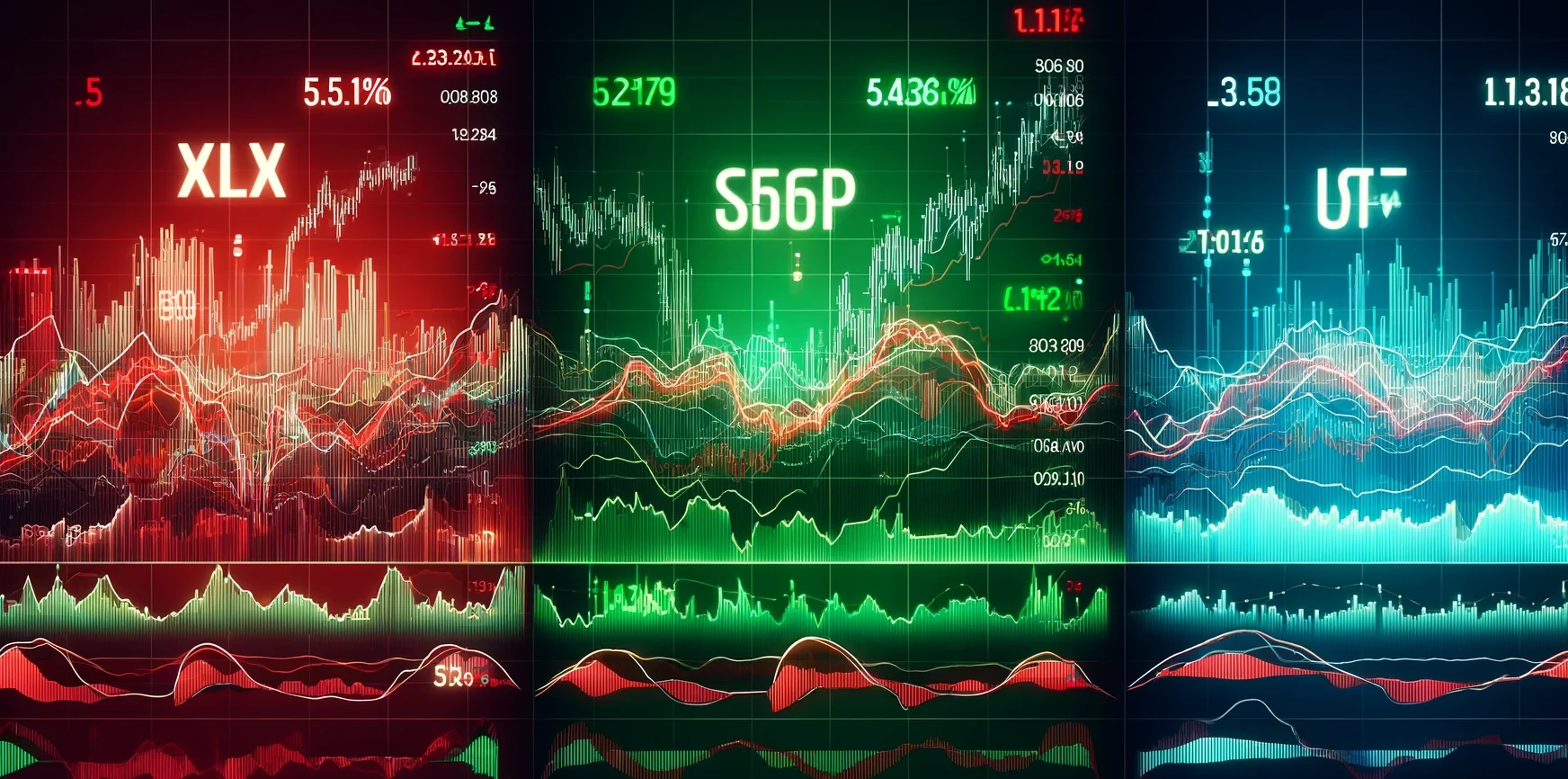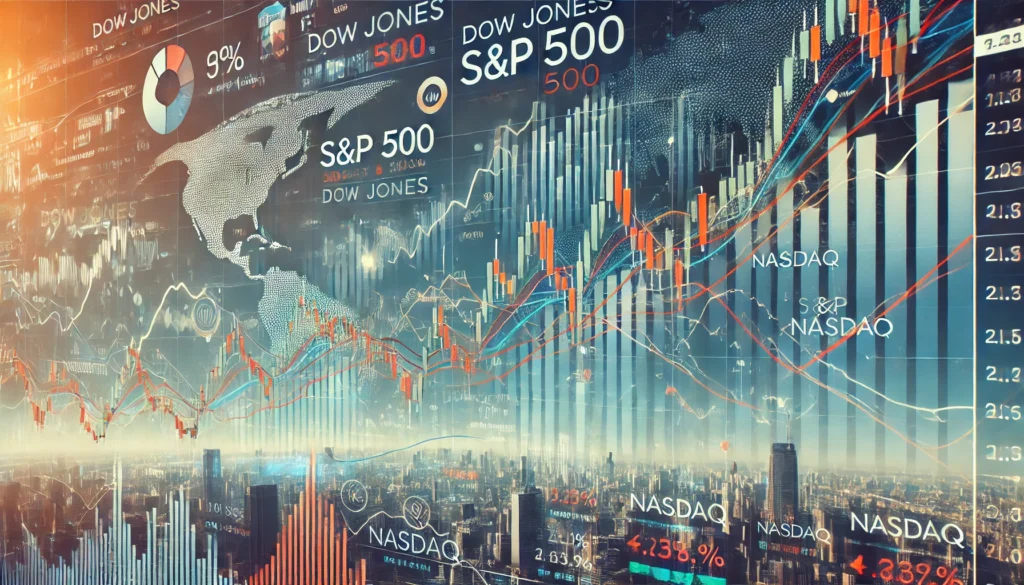
The U.S. stock market saw some significant shifts today, as the Dow Jones, S&P 500, and Nasdaq indices reacted to surprising new polling results out of Iowa. Investors were caught off guard by the poll, which has led to a change in sentiment regarding the upcoming elections, creating fresh volatility across major U.S. indices. Let’s dive into the details to understand the impact on today’s stock market.
1. Market Overview and Indices Performance
Dow Jones Today:
The Dow Jones Industrial Average dipped by 0.2%, shedding around 83 points to close at 42,138. This move is notable for being driven by a mix of election-related factors and sector-specific concerns that have taken hold in recent weeks. Historically, the Dow has been sensitive to both economic policies and geopolitical developments, and this election season is no different.
S&P 500 Sector Performance:
The S&P 500 saw a slight decrease of 0.1%, ending the day at 5,748. Sectors such as healthcare and consumer staples managed minor gains, while financials and technology struggled to keep pace. This subtle shift underscores the mixed outlook currently seen in the markets, where defensive sectors such as healthcare tend to gain strength in periods of political uncertainty.
Nasdaq Trading Update:
Meanwhile, the Nasdaq Composite dropped 0.3%, closing at 18,263, as tech stocks took a hit. With tech giants Apple and Google seeing dips in their stock value, the Nasdaq felt the pressure of broader economic anxieties.
2. Key Drivers: Iowa Poll Surprise Shifts Market Sentiment
The Iowa poll results released today revealed an unexpected lead for Vice President Kamala Harris. This comes as a surprising twist, considering former President Donald Trump had previously been favored. With Iowa often considered a bellwether state, the poll has introduced an element of unpredictability into the market, affecting sectors that have traditionally benefited from Trump’s trade policies.

3. Sectors Feeling the Impact: S&P 500 and Dow Jones Highlights
- Healthcare and Pharmaceuticals:
Healthcare and pharmaceuticals often experience stability during election cycles, especially when healthcare policies are a central focus in political platforms. With the current election uncertainty, healthcare stocks such as Pfizer and UnitedHealth Group have managed to retain value and even see minor upticks as investors look for defensive plays. - Consumer Staples:
Another traditionally defensive sector, consumer staples includes companies that produce essential goods. Brands like Procter & Gamble and Coca-Cola have benefited from this shift, as investors seek companies with stable earnings and less susceptibility to policy changes. - Financials:
The financial sector has experienced some headwinds, with bank stocks reacting to the potential for tighter regulation or changing tax policies. Financials like JPMorgan Chase and Goldman Sachs have seen fluctuations in their stock prices as they navigate the current political and economic landscape.
4. Treasury Yields and Safe Haven Investments
Treasury yields, particularly the 10-year yield, have seen downward movement, reflecting a cautious shift toward safer investments. The 10-year yield fell to 4.274%, signaling that investors may be retreating from stocks and reallocating funds into less volatile options. This flight to safety is not unusual during times of uncertainty, particularly in the lead-up to elections. With the yield curve indicating caution, it becomes evident that many investors are bracing for potential volatility.
5. Oil Prices Surge Amid Global Supply Concerns
In addition to election factors, oil prices have also experienced fluctuations. Oil futures spiked due to OPEC+ delaying planned production increases, impacting industries that rely heavily on energy and further contributing to today’s stock volatility. This increase in oil prices has ripple effects across sectors, with transportation and manufacturing particularly affected. Rising oil prices often contribute to inflationary pressures, leading investors to adjust their portfolios to hedge against potential costs.
6. Investor Insights and Sector-Specific Performance
Analyzing today’s Dow Jones market report and S&P 500 sector performance can provide valuable insights for investors. The unpredictability in the political landscape may favor sectors that perform well in volatile conditions, such as utilities and consumer staples. Conversely, sectors like financials and tech may experience greater fluctuations, as these industries are sensitive to policy changes and macroeconomic uncertainties.

Key Strategies for Investors:
- Diversification: To mitigate risk, investors may diversify across both defensive and growth-oriented sectors.
- Bond Investments: Bonds and treasury securities continue to attract those looking to shield their portfolios from equity volatility.
- Sector-Specific ETFs: Exchange-Traded Funds (ETFs) focusing on defensive sectors offer opportunities for investors seeking exposure to stable industries.
7. Technical Analysis: Resistance and Support Levels
Dow Jones Resistance: Analysts indicate resistance near the 42,500 level for the Dow Jones. Investors are keeping an eye on this level, as a break above could signal positive momentum, while a drop below support levels around 42,000 could indicate further downside risk.
S&P 500 Support: Support for the S&P 500 is currently hovering around the 5,700 level. If the index falls below this threshold, it could lead to a more bearish outlook, especially if election-related volatility escalates.
Indicators to Watch:
- Moving Averages: 50-day and 200-day moving averages remain key indicators for gauging market momentum.
- Volatility Index (VIX): The VIX is an essential barometer of market sentiment, reflecting investor fears or confidence.
8. Historical Context: How Elections Typically Influence Markets
Historically, stock markets tend to experience increased volatility during election cycles. The impact often varies depending on the policies of the leading candidates and the market’s perception of their potential economic effects. For example, markets typically respond positively to pro-business policies that may involve tax cuts, deregulation, or incentives for certain sectors. In contrast, more regulation or increased corporate tax policies may lead to a bearish outlook.
Examples from Past Elections:
- 2008 Financial Crisis and Election: The global financial crisis leading up to the 2008 election saw significant market declines. The market eventually rallied after the election as economic recovery efforts took effect.
- 2020 Election and Pandemic: The 2020 election, complicated by the COVID-19 pandemic, saw a highly polarized market. Tech stocks surged as the demand for digital solutions grew, while sectors like travel and hospitality faced immense challenges.

9. Expert Takeaways and Market Outlook
According to market analysts, the Iowa poll surprise has shifted the general outlook, introducing increased caution among traders. This trend could persist until the election results are finalized, as investors may be reluctant to make significant moves until there is more certainty.
Optimizing Your Portfolio: Investors may consider diversifying into sectors that are historically resilient during uncertain political periods, including utilities, healthcare, and consumer staples. Alternatively, risk-tolerant investors could look for opportunities in technology and financials, taking advantage of potential rebounds post-election.
Expert Recommendations:
- Short-Term Hedging: Utilizing options strategies can help mitigate risk in the short term.
- Dividend Stocks: Dividend-paying stocks are particularly appealing in uncertain markets as they provide steady returns.
- International Diversification: Global markets may offer additional opportunities, allowing investors to diversify outside U.S.-centric risks.

10. Upcoming Events to Monitor
With the Iowa surprise impacting today’s Dow Jones, S&P 500, and Nasdaq, it’s clear that the 2024 election will continue to play a critical role in market performance. As we approach November 5, all eyes are on election developments, which may determine the trajectory of the stock market in the coming weeks.
Key Events:
- Election Day (November 5, 2024): The outcome will likely have immediate effects on market sentiment, particularly in sectors tied to regulatory policies.
- Federal Reserve Meeting (November 7, 2024): Interest rate decisions will be crucial for markets, especially if the Fed signals further tightening or easing based on economic indicators.
Closing Thoughts: How Investors Can Navigate Market Uncertainty
In times of uncertainty, a balanced approach combining defensive investments with growth opportunities may help investors weather the storm. By staying informed about key factors like political developments, economic data, and technical analysis indicators, investors can make strategic decisions to optimize their portfolios amid shifting political and economic conditions.
Visit our other website: https://synergypublish.com

